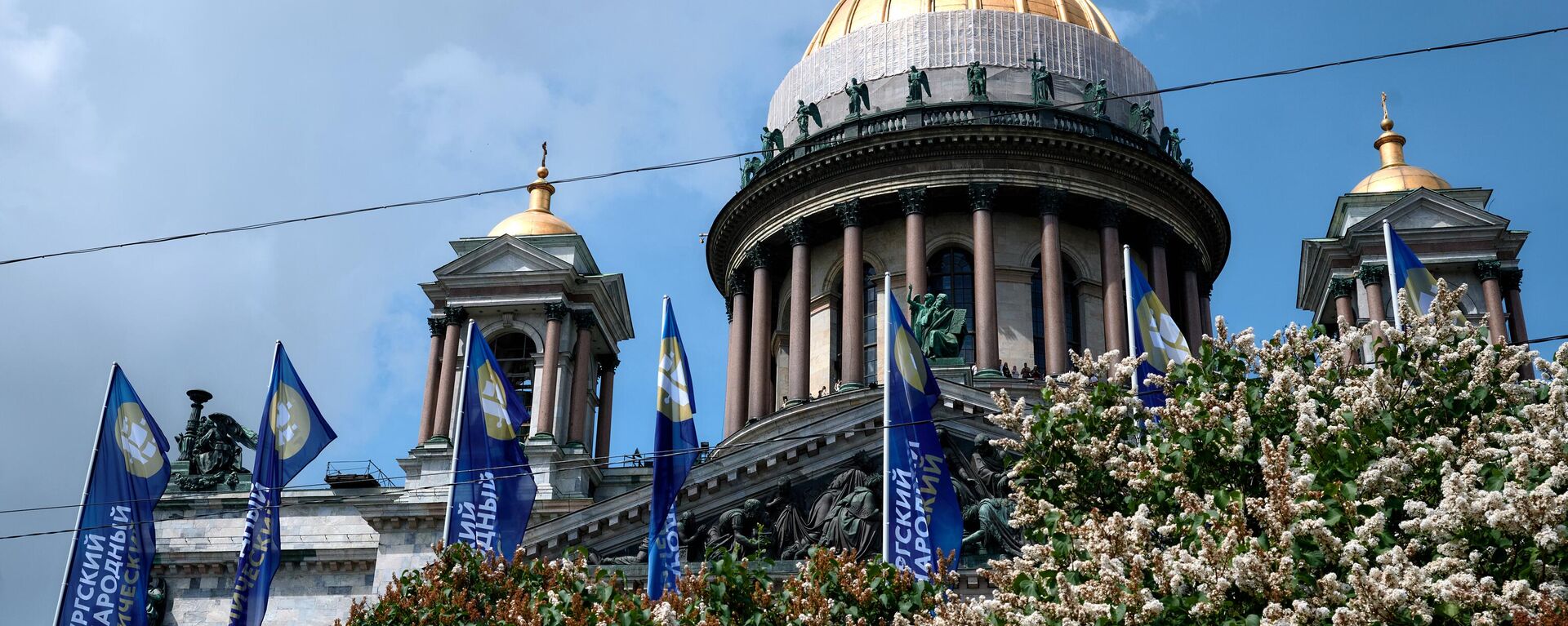https://sputniknews.in/20240606/brics-could-help-navigate-g7-ban-on-russian-diamonds-indias-top-industry-official-7544616.html
BRICS Could Help Navigate G7 Ban on Russian Diamonds: India's Top Industry Official
BRICS Could Help Navigate G7 Ban on Russian Diamonds: India's Top Industry Official
Sputnik India
The BRICS grouping has increased cooperation to help these economies overcome the potential fallout of the G7 ban on Russian diamonds, a top Indian diamond industry official told the St Petersburg International Economic Forum (SPIEF) on Thursday.
2024-06-06T18:15+0530
2024-06-06T18:15+0530
2024-06-06T18:15+0530
business & economy
india
russia
china
g7
brics
european union (eu)
raw diamonds
russian diamonds
diamond industry
https://cdn1.img.sputniknews.in/img/07e8/06/06/7547335_0:63:3001:1751_1920x0_80_0_0_1c8878e33cf561b053e7885800c1937e.jpg
The BRICS grouping has increased cooperation to help these economies overcome the potential fallout of the G7 ban on Russian diamonds, a top Indian diamond industry official told the St Petersburg International Economic Forum (SPIEF) on Thursday.The remarks by Bharat Diamond Bourse (BDB) President Anoop Mehta came during a panel discussion, titled 'Development of Cooperation in the Diamond Industry Among BRICS Countries', on the second day of the premier geo-economic event hosted annually in the northern Russian city of St Petersburg.Mehta, one of India's leading diamond merchants, highlighted the importance of BRICS and allied African nations in the global diamond supply chains as well as preventing price volatility.The diamantaire noted that China and India could become leading consumers of diamonds, rivalling the G7 economies, which at present are the predominant importers of diamonds.He said that India was in the "right direction" as far as the diamond trade was concerned, adding that there were certain issues linked to production which the state authorities were trying to overcome.Mehta further stressed that it was absolutely critical for India to maintain its dominant role as an "intermediary" in global diamond supply chains.Meanwhile, Russia's Alrosa has been the biggest source of roughs for the Indian Surat industry, known as the world's biggest diamond cutting and polishing hub. According to the sector data, roughly 90% of the global roughs are imported to Surat, cut and polished before being exported to foreign markets, primarily the US, European Union (EU) as well as Hong Kong.The diamond processing industry employs roughly 2.5 million people in Surat, many of them being blue-collar workers. However, there are significant concerns over the G7 ban on Russian diamond imports announced in December and implemented in phases starting January.As part of the G7 plan, diamond roughs across the world weighing over 0.5 carat and bound for Western markets will have to be routed through Antwerp from September in order to validate that they didn't originate in Russia.The Belgian diamond industry's official representative Antwerp World Diamond Centre (AWDC) last month suggested the creation of multiple diamond verification centres, or "nodes", outside the EU amid protests from African countries and India.India Wants 'Nodes' in All Diamond Producing Countries: MehtaSpeaking to Sputnik India on the sidelines of the SPIEF panel, BDB's president emphasized that Indian industry was "opposed" to having a single node in Belgium.The diamond expert said that the G7 and EU accounted for 60% of the world's diamond consumption.He stressed that the "most important point for India" was that it continued to get raw material (diamond roughs) as the industry was an "important source of livelihood" in the western part of the country. He noted that when world economy is under pressure, it is not the time to have any unemployment growing up in this department.
https://sputniknews.in/20240606/spief-2024-russias-brics-chairmanship-prioritizes-parliamentary-interaction-7542378.html
india
russia
china
Sputnik India
feedback.hindi@sputniknews.com
+74956456601
MIA „Rossiya Segodnya“
2024
Dhairya Maheshwari
https://cdn1.img.sputniknews.in/img/07e6/0c/13/138962_0:0:641:640_100x100_80_0_0_2cb44360dbcdf6d84bf4b299cd045917.jpg
Dhairya Maheshwari
https://cdn1.img.sputniknews.in/img/07e6/0c/13/138962_0:0:641:640_100x100_80_0_0_2cb44360dbcdf6d84bf4b299cd045917.jpg
News
en_IN
Sputnik India
feedback.hindi@sputniknews.com
+74956456601
MIA „Rossiya Segodnya“
Sputnik India
feedback.hindi@sputniknews.com
+74956456601
MIA „Rossiya Segodnya“
Dhairya Maheshwari
https://cdn1.img.sputniknews.in/img/07e6/0c/13/138962_0:0:641:640_100x100_80_0_0_2cb44360dbcdf6d84bf4b299cd045917.jpg
indian diamond industry, indian diamond exports, g7 diamond ban, russian diamond exports, surat diamond association, western sanctions on russia, g7 sanctions, spief 2024, spief, putin speech, putin news, putin at spief, st petersburg international economic forum, russia india ties, brics summit, brics expansion, brics russia, china india, bharat diamond bourse, surat diamond bourse,
indian diamond industry, indian diamond exports, g7 diamond ban, russian diamond exports, surat diamond association, western sanctions on russia, g7 sanctions, spief 2024, spief, putin speech, putin news, putin at spief, st petersburg international economic forum, russia india ties, brics summit, brics expansion, brics russia, china india, bharat diamond bourse, surat diamond bourse,
BRICS Could Help Navigate G7 Ban on Russian Diamonds: India's Top Industry Official
Bharat Diamond Bourse President Anoop Mehta told Sputnik India at the St Petersburg International Economic Forum (SPIEF) that Indian industry was opposed to the G7 plan of having a single diamond "node" in Antwerp.
The BRICS grouping has increased cooperation to help these economies overcome the potential fallout of the G7 ban on Russian diamonds, a top Indian diamond industry official told the St Petersburg International Economic Forum (SPIEF) on Thursday.
The remarks by Bharat Diamond Bourse (BDB) President Anoop Mehta came during a panel discussion, titled 'Development of Cooperation in the Diamond Industry Among BRICS Countries', on the second day of the premier geo-economic event hosted annually in the northern Russian city of St Petersburg.
Mehta, one of India's leading diamond merchants, highlighted the importance of BRICS and allied African nations in the global diamond supply chains as well as
preventing price volatility.
The diamantaire noted that China and India could become leading consumers of diamonds, rivalling the G7 economies, which at present are the predominant importers of diamonds.
"As you know, this [India] is one of the fastest-growing economies, and in the next five years, we will also outpace China as a consuming country," Mehta remarked.
He said that India was in the "right direction" as far as the diamond trade was concerned, adding that there were certain issues linked to production which the state authorities were trying to overcome.
Mehta further stressed that it was absolutely critical for India to maintain its dominant role as an "intermediary" in global diamond supply chains.
"To play an intermediary role is important for India. We have been doing this for the last so many years. And as part of BRICS, our government is very clear on the topic," the diamantaire underscored.
Meanwhile, Russia's Alrosa has been the biggest source of roughs for the Indian Surat industry, known as the world's biggest diamond cutting and polishing hub. According to the sector data, roughly 90% of the global
roughs are imported to Surat, cut and polished before being exported to foreign markets, primarily the US, European Union (EU) as well as Hong Kong.
The diamond processing industry employs roughly 2.5 million people in Surat, many of them being blue-collar workers.
However, there are significant concerns over the G7 ban on Russian diamond imports announced in December and implemented in phases starting January.
As part of the G7 plan, diamond roughs across the world weighing over 0.5 carat and bound for Western markets will have to be routed through Antwerp from September in order to validate that they didn't originate in Russia.
The Belgian diamond industry's official representative Antwerp World Diamond Centre (AWDC) last month suggested the
creation of multiple diamond verification centres, or "nodes", outside the EU amid protests from African countries and India.
India Wants 'Nodes' in All Diamond Producing Countries: Mehta
Speaking to Sputnik India on the sidelines of the SPIEF panel, BDB's president emphasized that Indian industry was "opposed" to having a single node in Belgium.
"We welcome having these nodes in all the producer countries, as well as where all diamonds are necessarily produced, which is India, so that the [supply] chains can be maintained," he noted.
The diamond expert said that the G7 and EU accounted for 60% of the world's diamond consumption.
"You still have a balance of 40% in the two fastest growing markets of India and China, where we believe these diamonds could be easily consumed," Mehta added.
He stressed that the "most important point for India" was that it continued to get raw material (diamond roughs) as the industry was an "important source of livelihood" in the western part of the country. He noted that when world economy is under pressure, it is not the time to have any unemployment growing up in this department.



